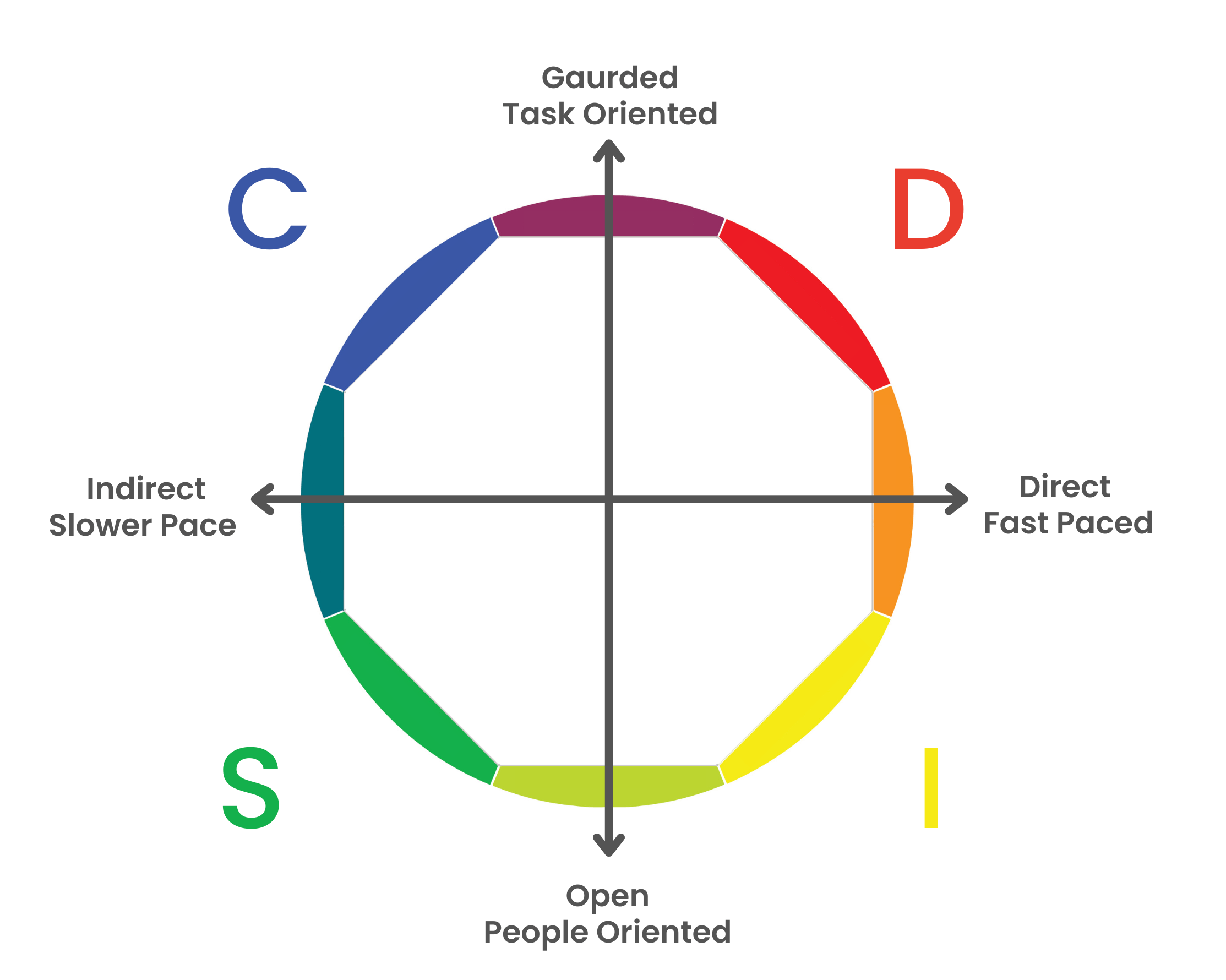DISC Methadology
DISC measures and provides insight into four primary behavioral tendencies and emotions, and explores how these come together in a personal blend of styles to create your unique profile.
The DISC assessment examines external and easily observable behaviors and measures tendencies using scales of directness and openness that each style exhibits. Also considered is the pace and priority, which represent two of the main sources of tension between the styles.
Dominance: Direct & Guarded, Fast-paced & Task-oriented, Focuses on Problems & Challenges, Assertive
Influence: Direct & Open, Fast-paced & People-oriented, Focuses on People & Contacts, Persuasive
Steadiness: Indirect & Open, Slow-paced & People-oriented, Focuses on Pace & Consistency, Supportive
Conscientious: Indirect & Guarded, Slow-paced & Task-oriented, Focuses on Procedures & Constraints, Analytical

Dominance Style

Characteristics
- Motivated by winning, competition, and success
- Enjoys challenges, taking action, and achieving immediate results
- Is direct, forceful, strong-willed, driven, determined, and self-confident.
- Limited by lack of concern for others, impatience, and stubbornness.
- Fears losing control, being taken advantage of.
- Values results and action, getting things done
Communication Tips
- Give them the bottom line.
- Be brief and quick.
- Focus your discussion.
- Avoid making generalizations.
- Refrain from repeating yourself.
- Focus on solutions rather than problems.
- Allow them to make choices and have control.

Influence Style

Characteristics
- Likes social recognition and group activities
- Prefers spontaneity and collaboration
- Described as charming, enthusiastic, charismatic, and optimistic
- Limited by lack of follow-through, impulsiveness and being disorganized
- Fears loss of social approval, being alone or ignored
- Values spontaneity, freedom of expression, social acceptance and fun
Communication Tips
- Share your experiences
- Don’t get frustrated with a quickly moving, sometimes scattered
- Allow them time to ask questions and talk openly
- Focus on the positives
- Don't interrupt
- Focus on the positives
- Follow up in writing.
- Avoid overloading them with details

Steadiness Style

Characteristics
- Motivated by cooperation, opportunities to help, and sincere appreciation
- Enjoys collaboration, and giving support
- Is calm, patient, predictable, deliberate, and consistent
- Limited by being indecisive, overly accommodating, and a tendency to avoid sudden change
- Fear sudden change and offending others
- Values loyalty, helping others, and security
Communication Tips
- Be personal and amiable
- Give them time to process
- Express your interest in them
- Be polite
- Share what you expect from them
- Avoid being confrontational, overly aggressive, or rude
- Take time to provide clarification

Conscientiousness Style

Characteristics
- Motivated by opportunities to gain more information, show their expertise, and produce high-quality, accurate work
- Ensurs accuracy, maintaining procedures
- Challenges assumptions with evidence and data
- Careful, cautious, systematic, diplomatic, accurate, and tactful
- Limited by being overcritical, overanalyzing, and isolating themselves
- Fears criticism and being wrong
Communication Tips
- Focus on facts and details
- Give time to process and respond
- Minimize "pep talk" or emotional language
- Allow time for them to gather their thoughts and resources to formulate the best response they can offer
- Be patient, persistent, and diplomatic
